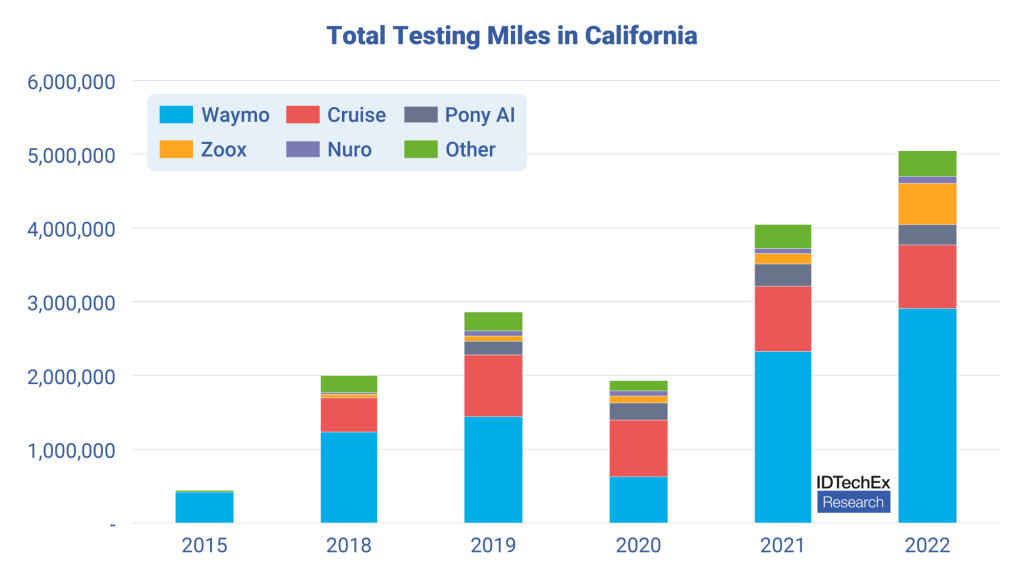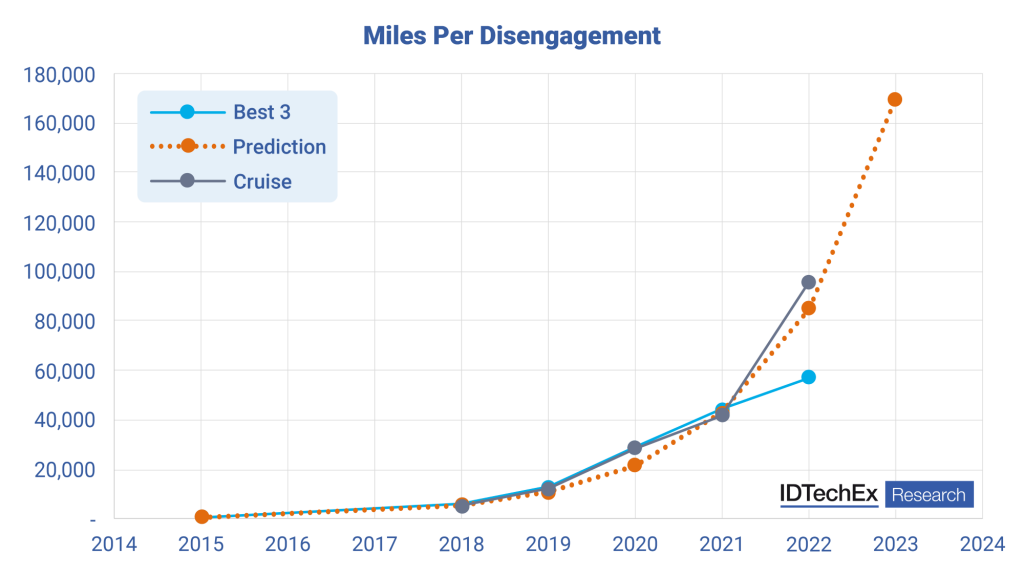
IDTechEx predicts rapid growth in the number of cities offering robotaxi services in the next few years, fulfilling the promise of autonomous vehicle (AV) launch services in U.S. cities in Arizona, California, and Nevada, according to its new industry report, “Autonomous Cars, Robotaxis and Sensors 2024-2044.” Report author Dr. James Jeffs, Senior Technology Analyst at IDTechEx, says that this summer, the robotaxi industry has seen more commercialization activity, with both Waymo and Cruise being given the green light by the CPUC (California Public Utilities Commission) to expand their commercial services in San Francisco.
With robotaxis becoming an everyday reality, the industry and experts must ask, are autonomous robotaxis safe enough, writes Jeffs. Waymo claims on its website that it outperforms human drivers when mitigating and avoiding collisions, but the researchers investigated what the California data show.
Safety is an area that IDTechEx’s AV experts have tracked closely as testing has proliferated, using data from the California DMV to understand how AVs are performing and improving. They consider several metrics when assessing AV safety including how many testing miles has each company amassed, how often the safety driver needs to intervene with the autonomous system, and how often the autonomous system causes a crash.
Miles per disengagement
A key metric is miles per disengagement, which measures how frequently AV safety drivers need to intervene with autonomous systems. IDTechEx has measured this since 2015, seeing exponential improvements in performance.
In 2015, Waymo was the best company for this metric, recording 424,000 miles of autonomous testing during which its safety drivers disengaged systems 341 times, for an average of about 1200 mi/disengagement. For reference, IDTechEx estimates that human drivers in the U.S. averaged about 200,000 miles between collisions. If it is assumed that each of Waymo’s disengagements would lead to a collision, which is unfair for the autonomous driver, Jeffs says, then it would be around 0.5% as safe as a human driver.
The AV industry has made significant progress since then, with IDTechEx saying that the number of miles per disengagement has nearly doubled each year. In 2022, Cruise was the leader in disengagement performance, with a score of nearly 96,000 miles per disengagement, or nearly 50% as safe as humans. During its 863,000 miles of testing, safety drivers only needed to intervene with the system nine times.

Counting collisions
As part of the report, IDTechEx looked closely at the disengagements and collisions in which AVs are involved. In doing so, researchers uncovered a surprising fact: four out of nine disengagements were caused by the poor performance of other drivers. If these are removed from consideration, then Cruise’s miles per disengagement score increases to over 170,000, 85% of the way to the rate at which humans have collisions.
Instead of miles per disengagement, Jeffs writes that perhaps the number of collisions that AVs are involved in should be considered. Between January 2019 and May 2023, companies testing in California submitted more than 450 reports ranging from collisions with other vehicles, to hitting curbs, and even vehicles being attacked by pedestrians.
IDTechEx’s analysts found that only 3.4% of collisions could be attributed to the poor performance of the autonomous system. Another way to look at it is, that in 2022, the autonomous driver caused collisions at a rate of 1 per 1.3 million mi, which is significantly better than for human drivers.
Removing safety drivers
Researchers also looked at how much AVs collide when autonomous systems have no human safety net. Since 2020, California has allowed driverless autonomous testing on its streets, with two companies taking advantage of this being Waymo and Cruise.
Between 2021 and 2022, Waymo recorded under 70,000 miles of driverless activity. Cruise only started recording driverless miles in 2022, but submitted a staggering 590,000 mi. During those miles, its vehicles were involved in 15 collisions—about 1 collision for every 40,000 mi, or 5 times more often than their human counterparts.
However, these miles were exclusively accumulated in San Francisco, one of the toughest driving environments in the U.S. for autonomous systems—but also tough for humans. With the city’s slower speeds and increased pedestrian presence, IDTechEx estimates that the collision rate for human drivers increases from about one per 200,000 miles (the U.S. average across all road types) to one per 107,000 mi—only half as good, but still better than autonomous drivers.
No serious injuries or deaths
According to Jeffs, one other statistic that should be considered when talking about the safety performance of AVs. Of the more than 450 collisions recorded by the companies testing autonomous cars, none involved a major injury or death. In the 4 years of testing from 2019 to 2022, that is nearly 14 million miles without a serious injury or fatality. NHTSA says that a fatality happens roughly once per 75 million miles of human driving. So, AVs still have a way to go, but it is looking promising, he said.
IDTechEx does not believe that AVs are as safe as humans yet, nor are they ready for widespread unsupervised deployment. However, the rate of autonomous technology improvement demonstrates the potential for them to far exceed human levels of safety in the future.

